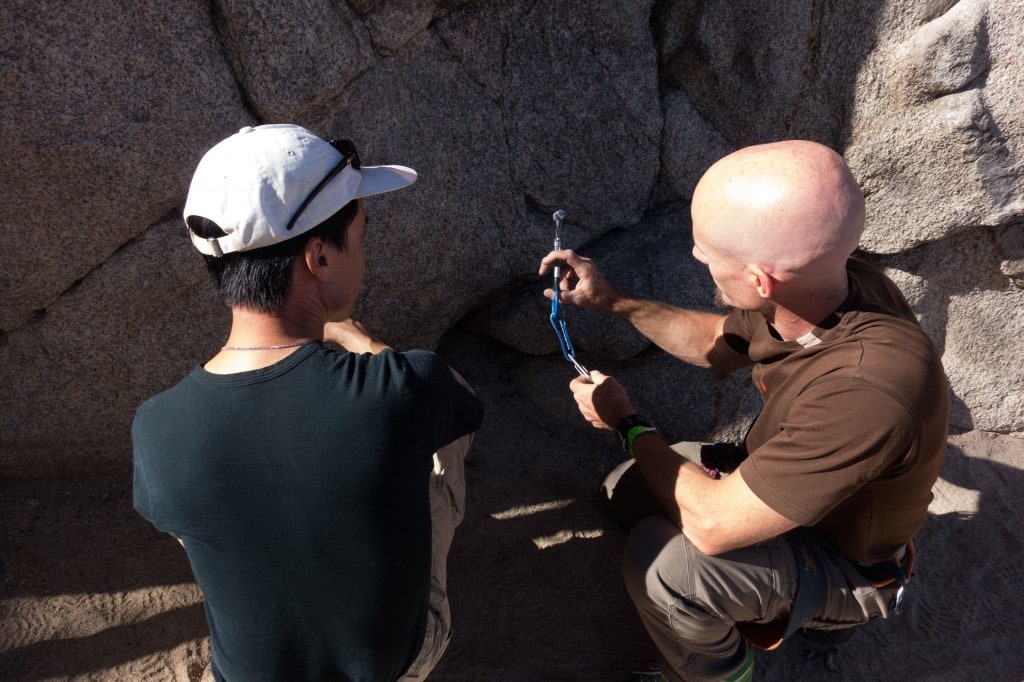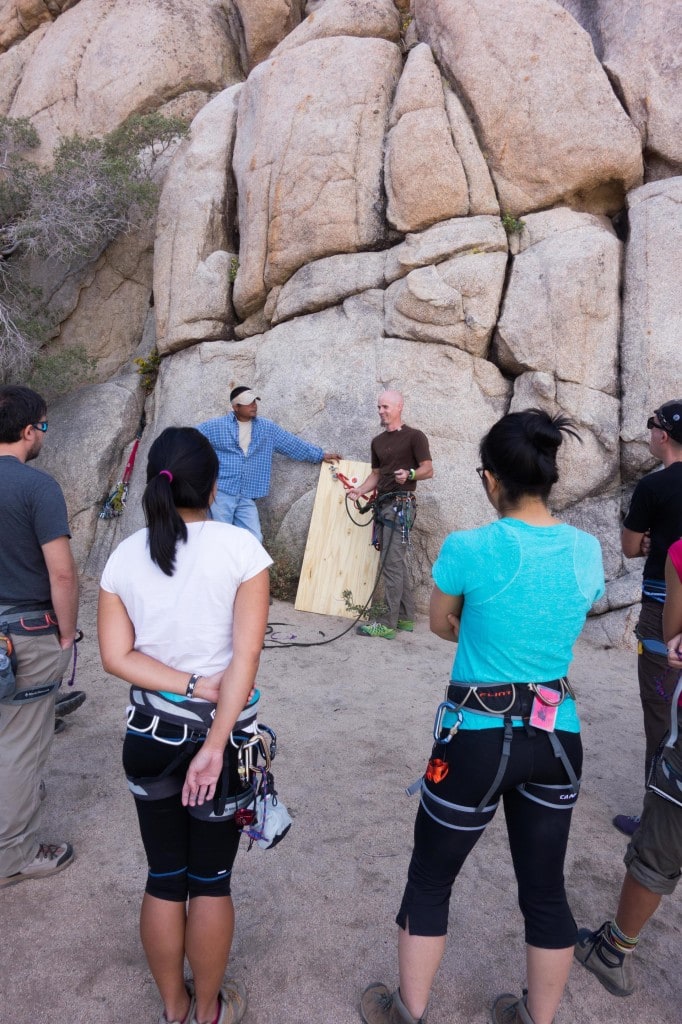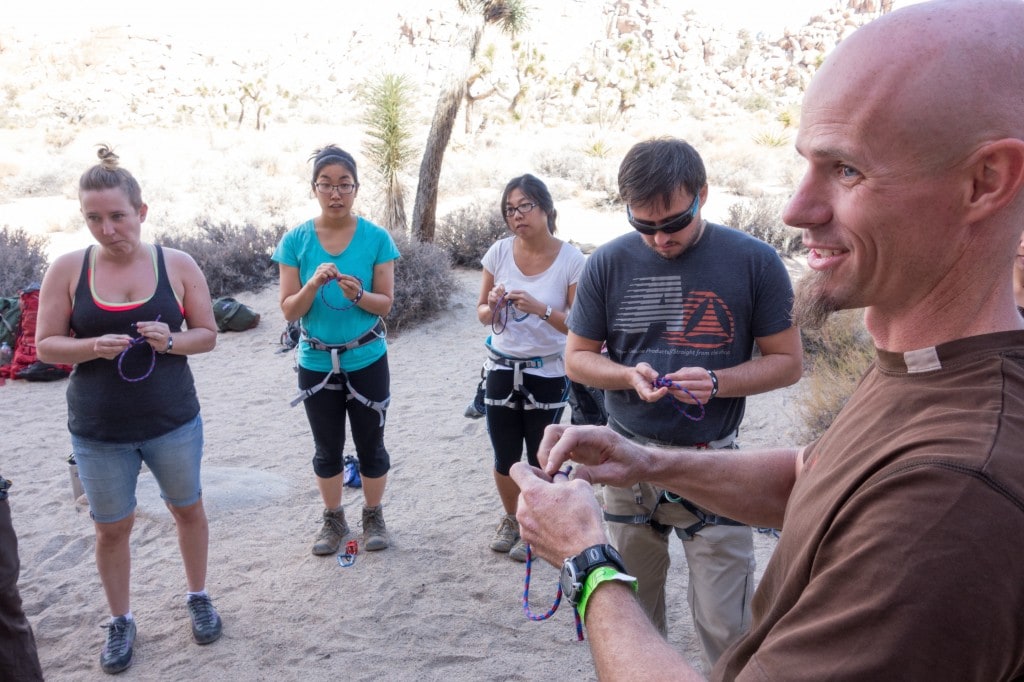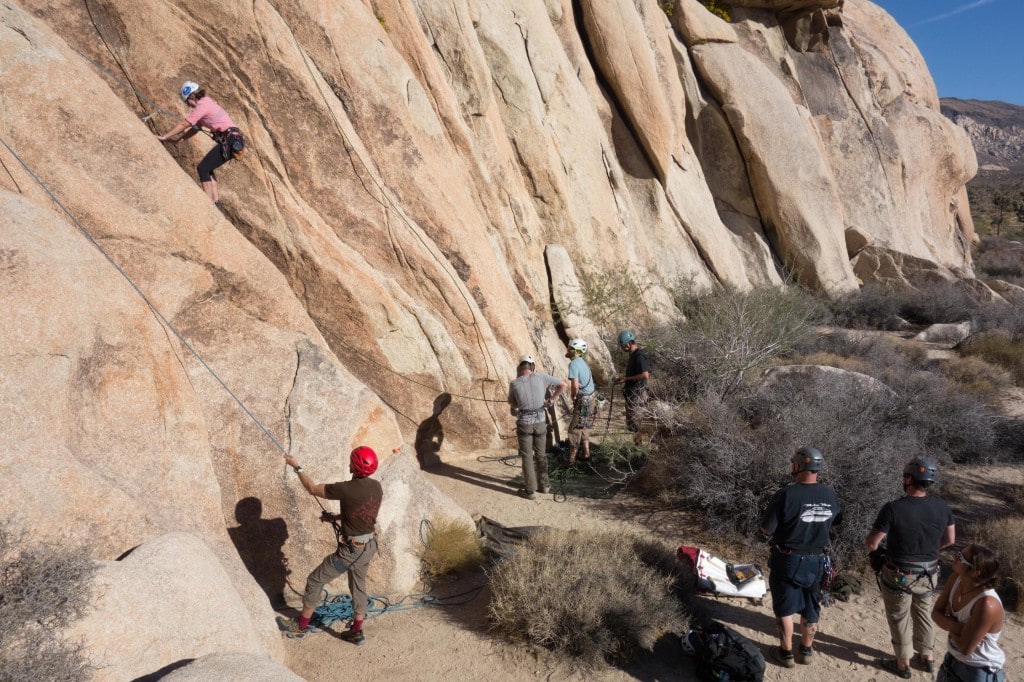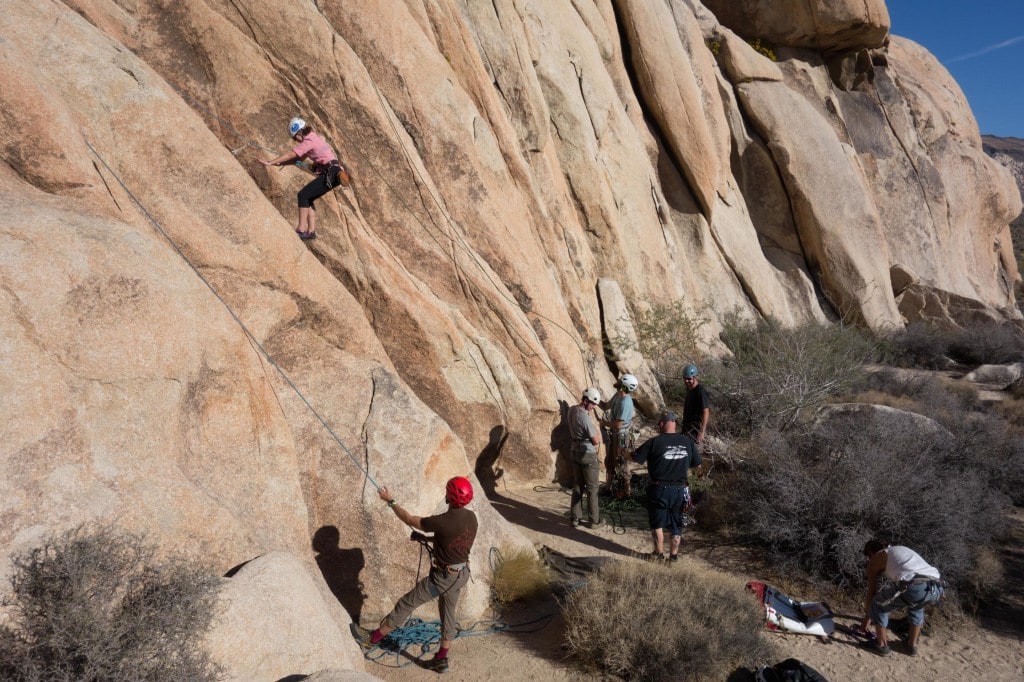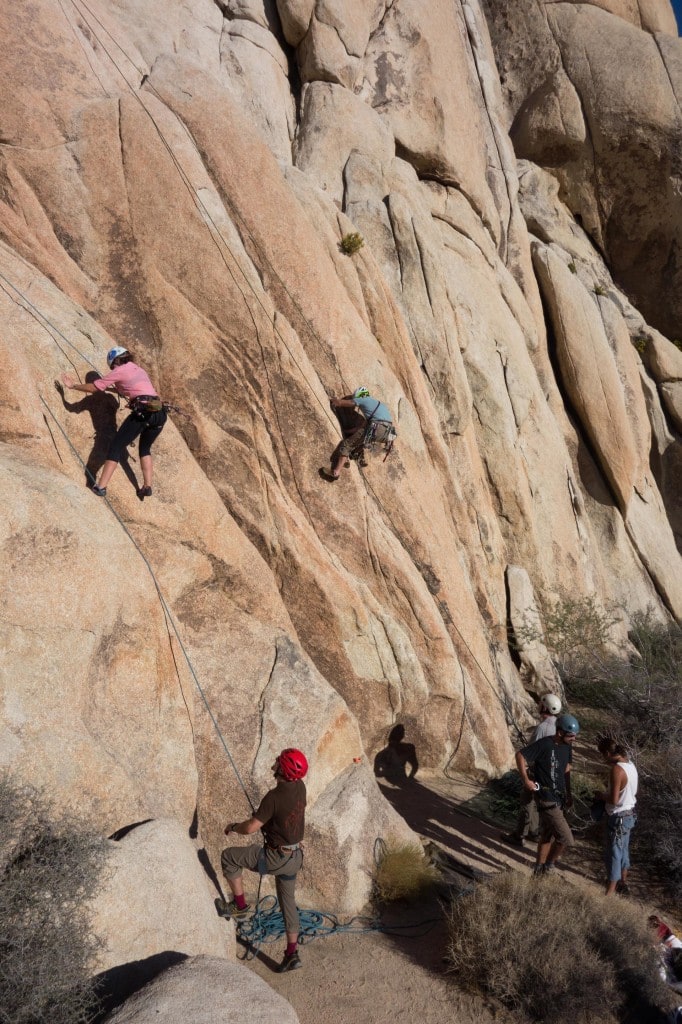Joshua Tree Climb Smart 2014 with The Climbing Life Guides
This year’s Joshua Tree Climb Smart event was quite busy as usual. The Climbing Life Guide’s volunteered their rock climbing guide services at the clinic and offered 2 hour clinics in placing rock protection, rappelling instruction, and lead climbing. *Note* You can see a better resolution image of each of these pictures by clicking on the individual pictures below. The beautiful Joshua Tree weather was quite accommodating for the event, and Joshua Tree was as beautiful a venue as ever!
The first rock climbing clinic we taught was “placing protection” and included guided instruction on how to place cams, nuts, tri cams, offset cams, and TCU’s. Some important concepts about placing rock pro were covered, including gear placement strategies while on lead, reasons to add slings to protection, identifying good places in the rock and on route for protection, making sure cams are placed optimally (angles between lobes, avoiding over-camming, inspecting for rock quality), placing nuts, racking gear, and climbing stances to use while placing protection.
The next clinic The Climbing Life Guide’s taught was a rappelling clinic. Since rappelling among rock climbers is used primarily for cleaning routes (getting all of the gear back off of the route after completing the route) and getting down from rock climbs after completing them, we focused on how to clean anchors. We brought a simulation set up that allowed participants to practice rock climbing anchor cleaning while safely situated on the ground. The set up consisted of a large wooden board with bolts, quick links, and rappel rings attached to the board.
Participants learned how to tie a cordillette, safely anchor themselves into the anchor, weight the anchor before coming off of belay, transition into rappelling from hanging on the anchor, and rappel off of the anchor. Several anchors were installed in the rock and participants were allowed to try cleaning an anchor from the ground and from a perched position about 2 feet off of the ground.
As part of the clinic, we also taught participants how to tie and use an auto-block cord while rappelling. All participants were given a free piece of cord, learned how to tie it into an auto-block, and learned how to fasten the auto-blcok to their harness for storage while climbing.
The next rock climbing clinic our guides taught was a 2 hour session on lead climbing. 2 hours really is not sufficient time for guides to cover this topic, but it did allow our guides to give good introductory lessons on lead rock climbing philosophy, techniques, strategies, and also an introduction to falling philosophy. After discussing all of these topics briefly, participants were given the opportunity to practice falling while on top rope and mock leading a climb while placing their own protection. Mock leading entails belaying a lead climber on top rope while they simulate a lead climb on a second rope. Lead climbing includes placing your own rock protection as you progress up a rock climbing route. As an option, the mock leaders were given the opportunity to place protection and take falls onto their gear while on top rope belay. The top rope belay was left somewhat slack when the lead climbers took their falls, allowing the lead climber to fall onto their gear on their lead belay rope. This set up required two belayers; one for belaying the leader on top rope, and one to belay the lead climber on lead. In the chance that the gear failed, the top rope was kept tight enough to catch the climbers. This clinic presented a TON of material and it was quite challenging to limit the clinic to two hours in length. Typically The Climbing Life Guides teaches this material to clients over the span of a full 8 hour day. Learning how to properly fall to minimize injury potential and learning to trust gear takes careful practice with a good instructor or guide.
Soft catch concepts were briefly introduced to the belayers as well.
These clinics offered a lot of information to participants in a very condensed two hour session. I highly encourage those who enjoyed these clinics to spend some time practicing these concepts as soon as possible after leaving the Climb Smart event to help retain as much information as possible. If these clinics were too much information to absorb in such a short time, please consider hiring a guide (preferably The Climbing Life Guides) to go over these concepts in greater detail. Rock climbing is quite a risky business, and all of these concepts are vital to risk management. As such, these concepts are very close to my heart as a guide. Enabling climbers to enjoy this sport as safely as possible is what motivates me as a guide! If you need a refresher or more instruction on these important techniques and concepts, please consider hiring me for a day!
October 20, 2014. Posted by: nelsonday
